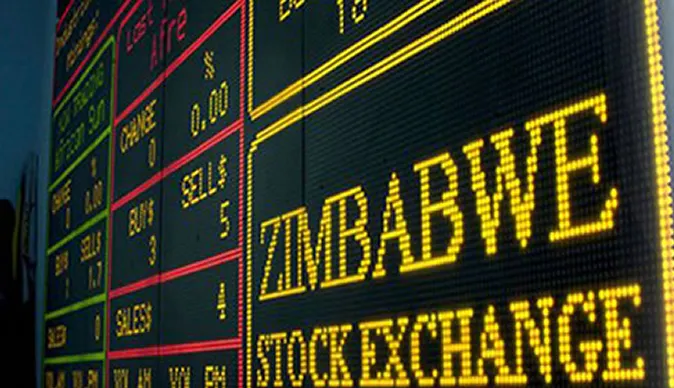
Tafara Mtutu WE are three months into 2022, and over 30 share splits have been recorded in global markets to date, with Alphabet and Amazon primed to each conclude a 20-for-one share split later this year.
Share splits are very common in many developed equity markets, and more than 50 splits are announced in a typical year.
Among some companies that concluded stock splits in recent years are Tesla, Apple, and Nvidia.
There are several reasons why stocks engage in stock splits, and these include inclusion in equity indices and enhancing the liquidity profile of the business’ stock without diluting a shareholder’s position in the company.
These have a bearing on the appetite of an institutional investor for the stocks in question.
A key reason for a stock split is to improve the liquidity profile of a company’s shares. When share prices appreciate to notably high levels, like Amazon (US$2 910,49 per share) and Alphabet (US$2 597,41 per share), it limits participation to mostly institutional investors and high net worth individuals.
This, in turn, reduces the liquidity of the stock by a magnitude equivalent to retail investor activity, which has increased exponentially over the years because of retail trading platforms like Robin Hood and Easy Equities.
Further to this, if the liquidity profile of a company’s stock is perceived to deteriorate as the share price continues to increase, it could result in the stock falling out of many institutional investors’ pool of investments because of increased liquidity risk beyond what many institutional investors can stomach.
- Chamisa under fire over US$120K donation
- Mavhunga puts DeMbare into Chibuku quarterfinals
- Pension funds bet on Cabora Bassa oilfields
- Councils defy govt fire tender directive
Keep Reading
Another reason for the stock splits is to qualify in price-weighted indices.
The Dow Jones Industrial Average Index (DJIA) is one such index that does not include companies with high-priced shares.
The index includes the US’s 30 blue-chip stocks as it is often used as a barometer for the performance of the broader equity markets in the US.
According to The Motley Fool, a stock is included in the DJIA “only if the company has an excellent reputation, demonstrates sustained growth and is of interest to a large number of investors.”
Therefore, stocks in this index are perceived to be market leaders in their respective sectors and inclusion in the DJIA is tantamount to excellence.
This exercise of splitting shares is also regarded as a positive signal to investors.
Share splits are often done by companies that anticipate sustained strong growth in earnings, as has been the case with major tech stocks in recent months, and announcements of share splits result in strong share price performance for the businesses after the conclusion of the exercise.
Apple, which concluded a 7-for-1 stock split in June 2014 and became a part of the DJIA in 2015, recorded an earnings growth of 140% in five years, from US$39,5 billion in 2013 to US$94,7 billion in 2021, and affirms the positive signal that comes with stock splits.
The ZSE has a few stocks that could be ripe for a share split.
These are BAT Zimbabwe, Cafca Limited, and National Foods Limited.
BAT Zimbabwe closed the day at ZW$3 667 (US$28) per share on March 14, which makes it the most expensive stock on the bourse.
At this price, very few retail investors have enough to invest in BAT Zimbabwe and, together with an extremely limited free float, make the stock very illiquid.
While many regard the stock as overpriced in comparison to its intrinsic value, the business has begun investing further into the tobacco value chain through cutrag production, and this could underpin the business’ renewed growth potential in the medium to long-term.
A stock split would likely improve liquidity, limited free float notwithstanding, and even result in long-term share price appreciation.
Cafca Limited is another stock that could benefit from a share split.
The semi-conductor manufacturer’s stock is currently priced at ZW$170 (US$1,30) per share and is also very illiquid.
While the price is not as highly priced as BAT Zimbabwe, what makes this stock interesting is that it is a small cap stock.
Given the performance of other small cap stocks on the exchange with prices less than ZW$20 (US$0,15), it is highly likely that an improvement in liquidity, through a 10-for-1 split for example, will result in a share price appreciation that is also supported by fundamentals.
National Foods is also another stock that can see a change in its risk profile after a share split.
It is currently priced at ZW$1 750 (US$13,46) per share, making it the second-most expensive stock on the ZSE after BAT Zimbabwe.
Given that millers will likely play a critical role in Zimbabwe’s food security this year, NatFoods looks to be strategically positioned as a major maize and wheat miller.
The stock is also very illiquid, and a share split could drive fluid incorporation of new developments by both institutional and retail investors.
The advantage of share splits to investors will be an improved risk profile among their holdings, specifically to those with these stocks in their portfolios, while the issuer will benefit from the increased visibility of their company’s stock.
However, there is very limited incentive to be included on the ZSE’s indices given that, at their stratospheric prices, NatFoods and BAT Zimbabwe are still eligible for inclusion in the ZSE’s Top 10 Index.
More specifically, a lower liquidity risk profile could offer incentives for institutional investors to increase exposure in these stocks, which also happen to be the only listed stocks in their respective sectors.
BAT Zimbabwe is the only listed cigarette manufacturer, NatFoods is the only listed dedicated milling company, and Cafca is the only listed semiconductor manufacturer.
The split will also increase participation in these stocks by retail investors trading through C-Trade and ZSE Direct.
- Mtutu is a research analyst at Morgan & Co. — tafara@morganzim.com or +263 774 795 854.










